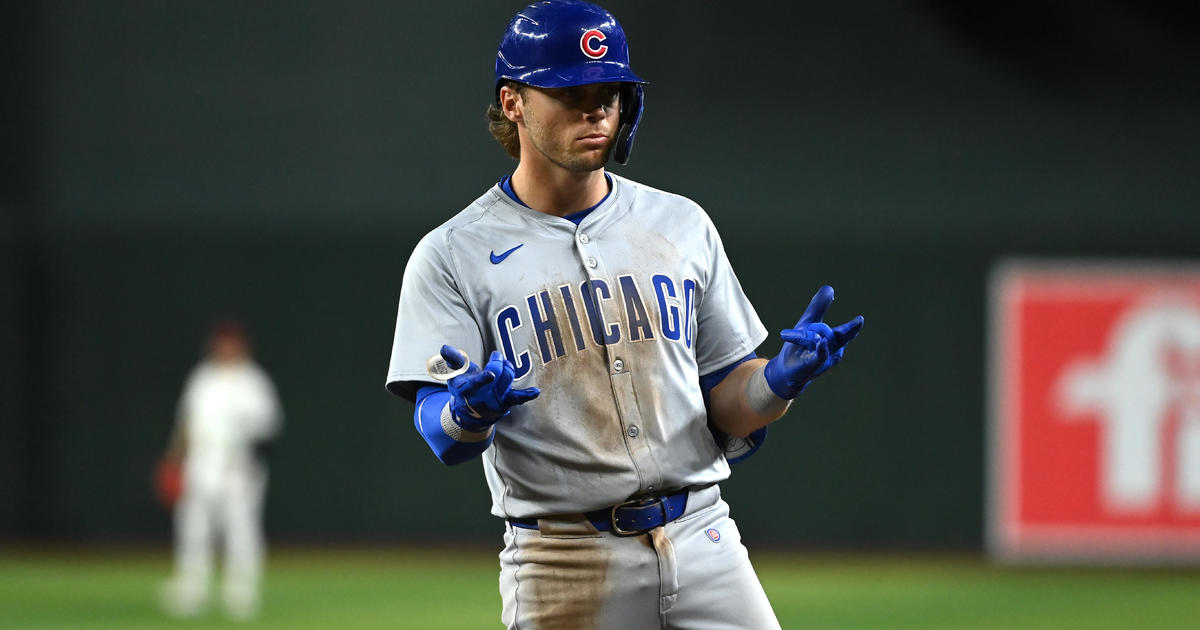Bernstein: MLB Needs To Address Home Run Spike
By Dan Bernstein--
CBSChicago.com senior columnist
(CBS) MLBcommissioner Rob Manfred has a simple choice. He can either explain why the league changed the ball after the 2015 All-Star break to induce more home runs or he can pledge to find out how the accident happened and tell us what he will do about it.
If you're just joining the biggest story of the season — yes, bigger than Ichiro's 3,000th hit, A-Rod's departure, Jose Altuve or the Cubs — what you need to know is that balls are flying out of parks at an insanely high rate since August of last year. MLB is on pace for an increase of around 14 percent over 2015's total and a whopping 33 percent increase over 2014's.
The smartest analysts in the game have been studying the phenomenon since last winter, with the notable late-season change setting off alerts. Ben Lindbergh and Rob Arthur at Fivethirtyeight.com have been all over it, as have Joe Sheehan, physicist Alan Nathan at the Hardball Times and others, presenting loads of data to strip away all the possible alternative causes of the boom.
So to not overwhelm you with mathematical details, know this: It's not steroids. Even those of us who believe that users are always a step ahead of the tests with something undetectable can't argue with something so clearly illogical. There's no possible way everybody in the game started doping successfully at exactly the same point, synchronized to cause more fly balls to carry farther. And it's not just off the bats of the known sluggers, but off every bat.
It's not swing planes upper-cutting more fly balls or the higher average pitch velocity or global climate change. And it's not an influx of young power hitters to the big leagues. The increase is across the board, equally distributed and even measured against results from the same actual players' Triple-A data. There's no smoking-gun definitive proof that the ball has been altered, but there's no other plausible explanation.
Manfred was asked about it in July, and he said: "We think it has to do with the way pitchers pitch and the way hitters are being taught to play the game. You've seen some unusual developments in terms of home run hitters being up in the lineup to get them more at-bats. So we think it has more to do with the game this time around."
The problem with that, again, is the defined point at which the spike occurred. Manfred describes something gradual as the game evolves naturally. All pitchers didn't start doing something drastically different, and all hitters weren't taught something entirely new that they could implement immediately. And both definitely didn't happen at the same time. It makes no sense, and Manfred has to answer for what the graphs show.
He has insisted the ball hasn't changed, despite Rawlings making a major shift in manufacturing operations at a plant in Costa Rica in the middle of 2015, outsourcing their apparel business and converting a primary factory to make baseballs.
Regardless, Manfred can't continue to ignore the mounting evidence that this increase simply isn't due to the reasons he stated. He's a Harvard-educated lawyer, fully capable of comprehending data analysis raising fair and reasonable questions about what's happening.
When he first took the job, Manfred expressed the dual goals of increasing offense and shortening game times, a seemingly counterintuitive plan to keep shorter attention spans engaged. It's at least interesting that more home runs could be a way to accomplish just that, and that since last August, he has benefitted from a very fortuitous and still unexplained coincidence.
Dan Bernstein is a co-host of 670 The Score's "Boers and Bernstein Show" in afternoon drive. You can follow him on Twitter @dan_bernstein and read more of his columns here.



